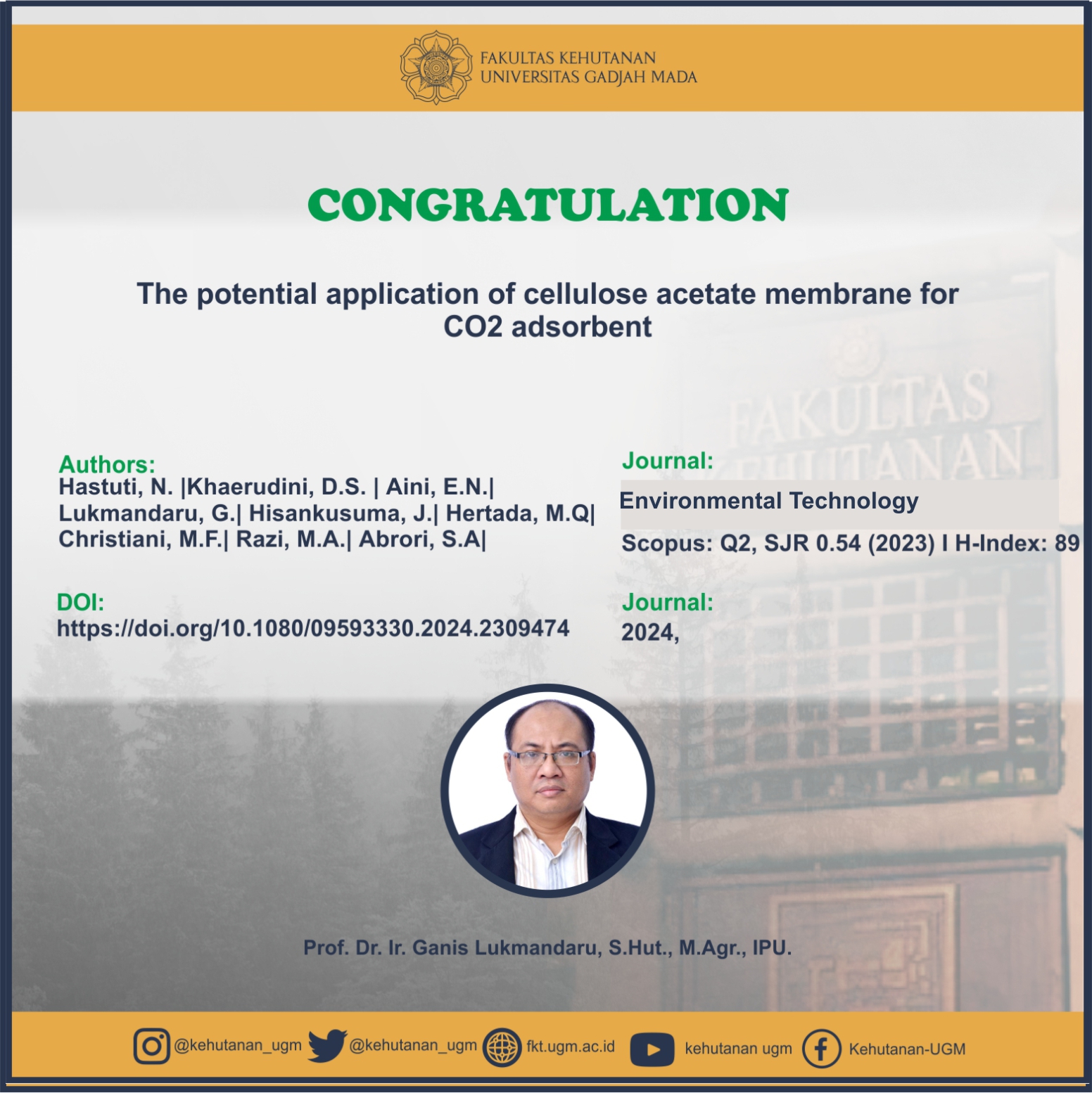
Abstract
Numerous countries have deployed significant efforts to reduce the amount of CO2released intothe atmosphere. Carbon capture and storage is widely regarded as a mitigation technique that cansignificantly reduce CO2emissions. A crucial stage in carbon capture and storage is CO2adsorptionusing a membrane. Cellulose acetate has demonstrated excellent properties as a membranematerial. In this study, we examined the potential of cellulose acetate membrane (CAM) for CO2gas capture. Two forms of CAM were developed for this study, with and without the addition ofglycerol.Scanning Electron Microscope(SEM),Fourier Transform Infrared(FTIR), and CO2adsorption analyses were used to characterise CAM in numerous ways. The analysis revealedthat the addition of glycerol improved the gas adsorption properties of the material. Theincorporation of glycerol into the cellulose acetate matrix resulted in an observed augmentationin both the diameter and pore size. The adsorption properties of CO2are significantlyinfluenced by the microscopic structure of the cellulose acetate membrane. The CAM can beviewed as a possible material for CO2adsorbers.
SDGs:
1. SDGs 7:Affordable and Clean Energy
2. SDGs 9:Industry, Innovation, and Infrastructure
3. SDGs 12:Responsible Consumption and Production
4. SDGs 13:Climate Action
Link Dokumen:
Download
